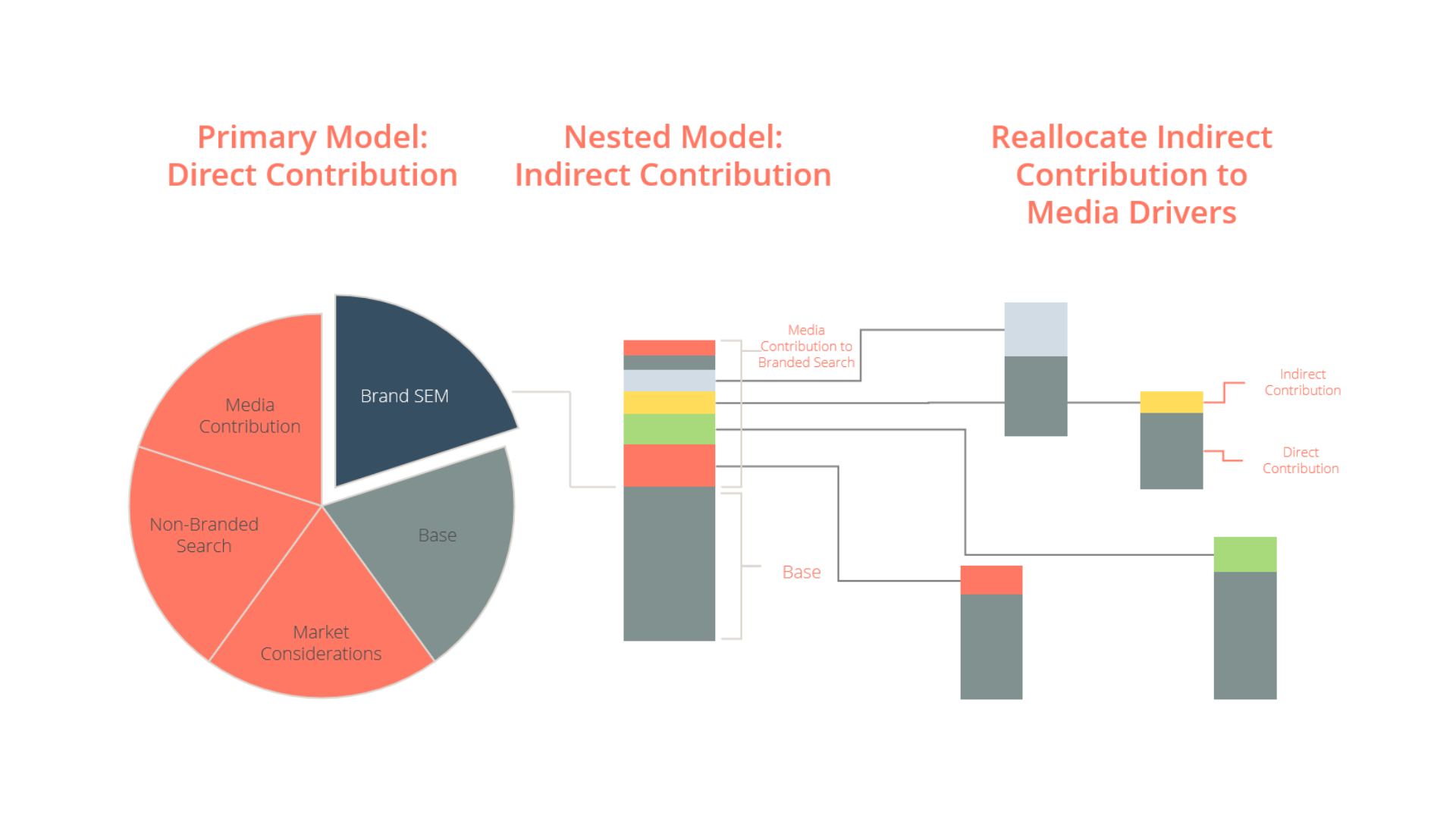Market Mix Modeling (MMM) has been a powerful tool for marketers to analyze the impact of various marketing channels on sales and revenue. Nested modeling takes this approach to the next level, providing a more granular understanding of the interplay between different components within marketing campaigns. In this article, we delve into nested modeling within MMM, using the example of brand SEM to demonstrate how it allows for more accurate insights into demand capture and optimal media budget allocation.
Understanding Nested Modeling in MMM
Nested modeling is a technique where a sub-model is embedded within the primary model, allowing for a more detailed analysis of specific components of a marketing campaign. In MMM, the primary model might encompass various marketing channels, while nested models focus on individual channels or tactics. This hierarchical approach provides a comprehensive view of how different elements interact and contribute to overall marketing success.
Brand SEM as a Nested Model
Search engine marketing (SEM) is a popular marketing channel used to enhance brand visibility and attract targeted traffic through search engines. Brand SEM refers to SEM campaigns specifically targeting branded keywords or phrases associated with a company or product. By nesting brand SEM within the primary MMM model, businesses can analyze its impact on demand capture more accurately.

Demand Capture Vehicles and Contribution Analysis
Demand capture vehicles are marketing tactics that capture existing demand for a brand or product. These vehicles include branded SEM, direct traffic, and other channels where customers actively seek out a brand. By nesting brand SEM as a sub-model, marketers can determine its contribution to overall demand capture accurately. This insight allows businesses to allocate media budgets effectively to the media that drives the most demand.
Reallocation of Media Budgets
Nested modeling with brand SEM provides marketers with a powerful tool for budget optimization. By understanding the specific contribution of Brand SEM to demand capture, businesses can adjust media budgets to focus on the most effective channels. If brand SEM significantly drives demand, reallocating funds from less impactful channels to brand SEM can result in higher ROI and better overall marketing performance.
Let’s consider a hypothetical case study where a company runs both brand SEM and brand TV campaigns. The primary MMM model measures the combined impact of these two channels; however, there will be a significant amount of brand search driven by the TV. By doing another model with the brand SEM as primary KPI, we can understand how much of that contribution was really driven by TV. The overall TV contribution would then be what it drives directly plus what it drove via brand SEM.
Nested modeling within marketing mix modeling introduces a more nuanced approach to understanding the intricate relationships between marketing channels. By nesting brand SEM as a sub-model, businesses gain valuable insights into demand capture vehicles’ contribution and can reallocate media budgets to maximize the impact of their marketing strategies. This advanced modeling technique empowers marketers to make data-driven decisions, optimize their marketing mix, and stay ahead of the competition in an increasingly dynamic marketplace. By embracing nested modeling, businesses can achieve enhanced ROI, improved marketing performance, and ultimately drive sustainable growth.